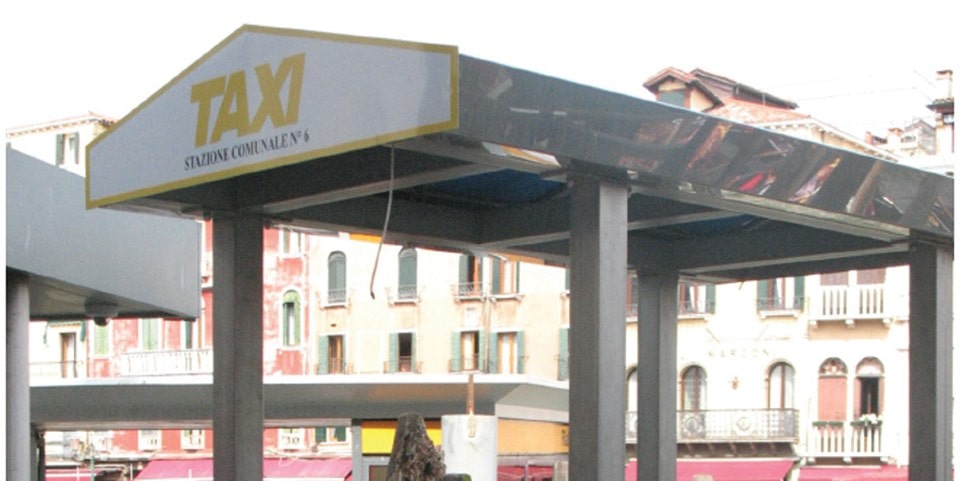A recent project in Venice, Italy, was undertaken to produce a uniform range of municipal water taxi pontoons.
^ The marine environment in Venice required the use of stainless steel for the taxi pontoons.
Article by Joanne McIntyre
___
The new range of floating taxi stands/ pontoons were required to have a uniform recognisable appearance which would enable people to identify them easily throughout the city. It was also essential that the design for the taxi stands fitted in with the historic architecture in the centre of Venice. In this regard, suitable landscape compatibility was essential. Another important consideration was that the structures were designed to provide shelter from the elements for customers, as they waited for a taxi to arrive and during embarking/disembarkation.

without clashing with the historical architecture.
Marine environment
The city of Venice is famous for its location at sea, where canals provide the only means of access and transport. Given the marine environment of the city centre, the choice of material for all elements of the new taxi pontoons was stainless steel EN 1.4404 (AlSI 316L). This material would guarantee corrosion resistance even in the aggressive atmosphere.
While there are slight variations among the various taxi station pontoons, depending on their location in the city, in general, the final design resulted in a very similar, easily recognizable appearance. The completed taxi pontoons were standardized with respect to the core elements.
The pontoons were constructed using an appropriate framework essentially consisting of:
- Uprights (four square welded hollow sections),
- Beams and crosspieces (two longitudinal square hollow sections equal to that of the uprights),
- An upper frame (six round hollow sections and five longitudinal tubes),
- Two side gutters made from sheet metal,
- Two sheet metal fronts bearing the inscription “TAXI,”
- Handles for wooden railings obtained from a tube.
All the metal elements were made entirely from stainless steel EN 1.4404 (AISI 316L).
Reproduced with kind permission from Centro Inox; text & images from Inossidabile 212.

